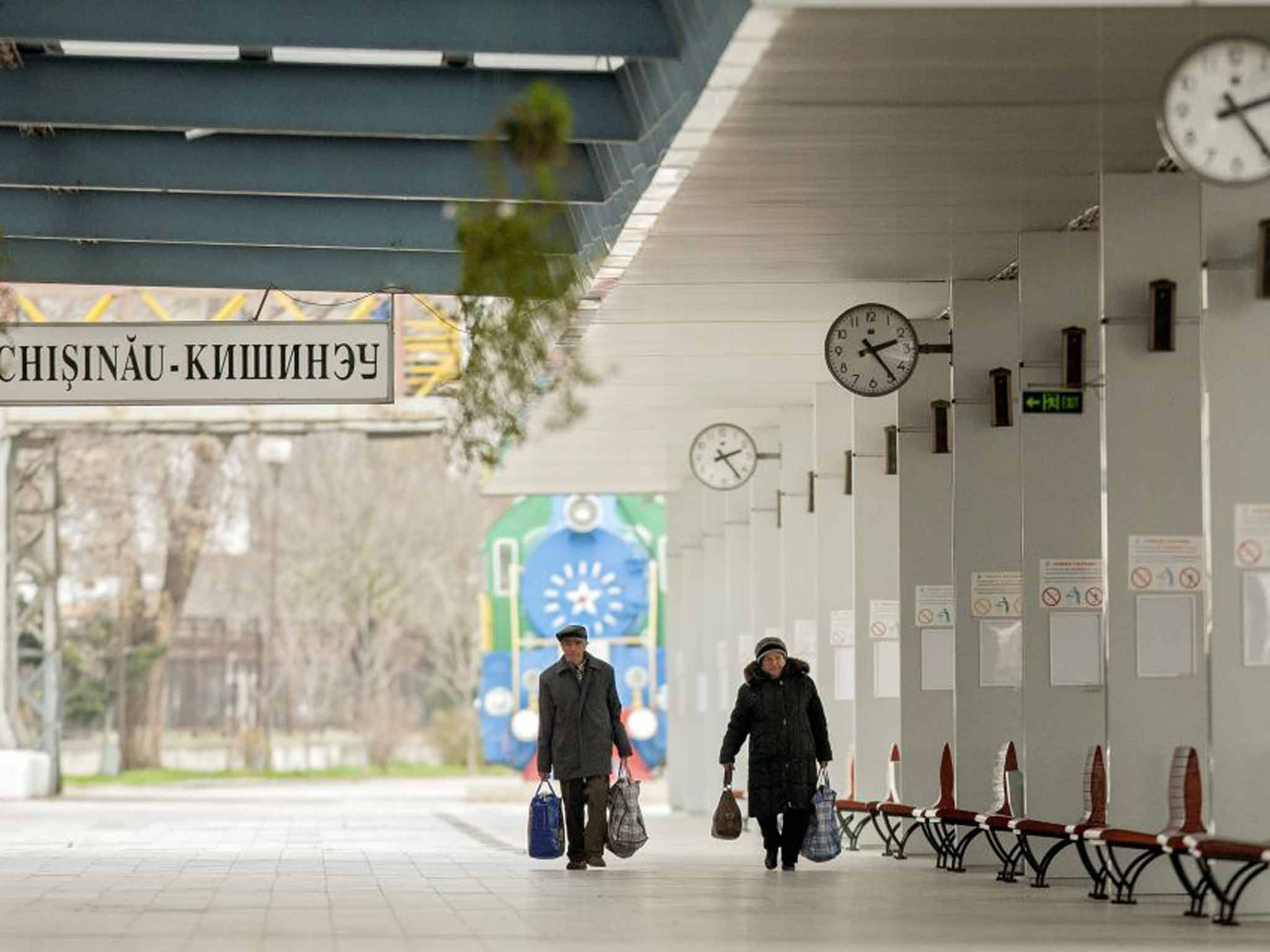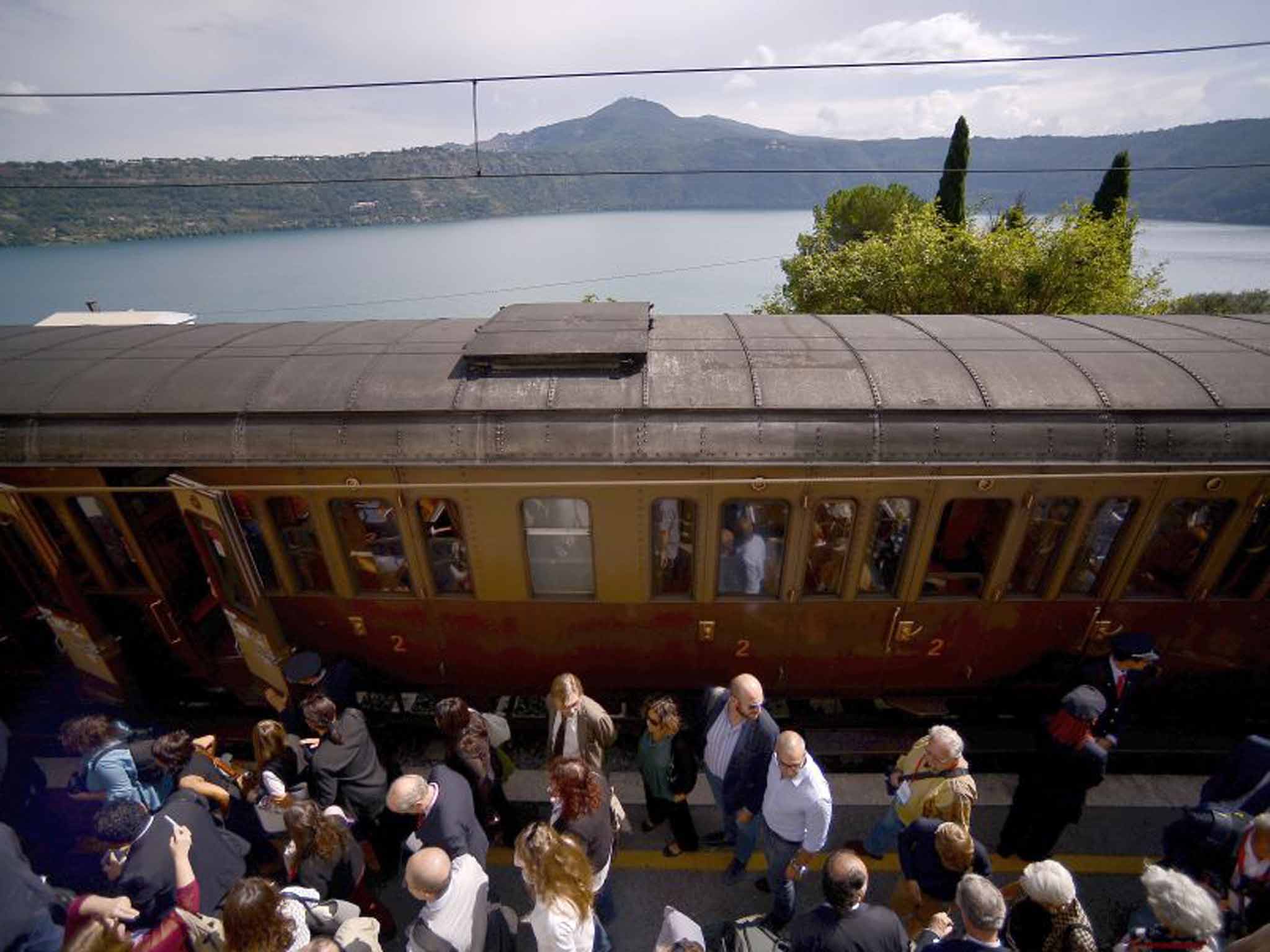Europe's quietest railway stations: The Vatican station is the perfect antidote to Waterloo
Need more elbow room? Nicky Gardner and Susanne Kries highlight little-used train terminals

The news that London's Waterloo station is set to top 200 million rail passengers a year propels it to the top of the league table of Europe's busiest rail terminals. However, there are plenty of capital-city railway stations around Europe that still offer crowd-free tranquillity.
The main terminal in Moldova's capital city of Chisinau hardly bustles with passengers. With less than a score of trains leaving the station each day, visitors can often daydream in solitude. Just as Waterloo has its gracious Victory Arch – a fine memorial to railway workers who perished in the Great War – so the station pavilion at Chisinau has a plaque recalling the Russian troops and Bulgarian volunteers who, in 1877, departed from the station “to liberate the Balkan peoples from the Ottoman yoke”. A second plaque recalls “the revolutionary struggle of the workers and soldiers” who tussled for power after the Russian Revolution in 1917.
With its beautiful Soviet-era Moorish arch and façade, Chisinau station has a charm entirely absent at Sarajevo's main station. And while the former boasts trains to far and wide (Moscow, Odessa, Bucharest and more), the departure boards at the latter are distinctly parochial. The sole railway station in the capital city of Bosnia-Herzegovina has just seven departures a day. With no trains leaving between 11.19am and 3.40pm, station staff enjoy a four-hour break.
Only one train a day from Sarajevo ventures beyond the borders of the country: the 10.43am to Zagreb, which usually has just two carriages. Three on busy days, but they are rarely more than half-full so passengers enjoy space that would be the envy of commuter crowds at Waterloo.
There are many European capital city railway stations with just a handful of trains each day. Pristina station in Kosovo has just three daily departures. Even the star of the day, the early morning service to Skopje, doesn't pull crowds. It rarely has more than a handful of passengers, who can stretch out in its two carriages.
In the Albanian capital, Tirana, the railway station was so little valued it was recently swept away in a huge urban renewal project. Residents of the capital can still take the bus to nearby Kashar, from where seven trains each day trundle down to the port of Durres. But Tirana now ranks alongside Andorra La Vella, Valletta and Vaduz as one of Europe's trainless capitals.

Vaduz may not have trains, but Liechtenstein does. The diminutive Alpine principality is traversed by one of Europe's main rail routes: the line from Zurich to Innsbruck, which carries sleek red Railjets bound for Budapest and the romantically named Alpine Pearls night train to Belgrade. One of its handful of stations affects capital city connections by calling itself Schaan-Vaduz, but it is fair and square in Schaan, from where passengers need to catch a bus to Vaduz. Schaan-Vaduz does enjoy the minor distinction of having only international departures. The station has 18 trains a day on weekdays, all heading to Switzerland or Austria.
The curiosity of hosting only international departures is reserved for a rare elite of stations, including those at Monaco-Monte Carlo (where all rails lead to France) and Vatican City – where Stazione del Vaticano lies at the end of a line running from Rome into Vatican territory.
The Vatican station is the perfect antidote to Waterloo and – in terms of passenger numbers – the least busy capital-city terminal in Europe. Until recently, the Vatican railway was reserved for papal expeditions and occasional pilgrimage trains, but Pope Francis has brought a breath of fresh air to Vatican transport. Last September, he opened the railway and his private station to the public, since when it has been used by just a dozen trains. A service runs on certain Saturdays from the Vatican station to Castel Gandolfo, where the Barberini Gardens and the museum at the Pope's summer palace are now open to the public.
The 2016 departure dates of this train have yet to be announced, but the autumn 2015 programme sealed the papal station's status as a rare railway excursion. The quiet station at the Vatican has none of the commercial bustle of Waterloo, although there is a duty-free shop. Unfortunately, it is reserved only for residents of Vatican City.
Nicky Gardner and Susanne Kries are the editors of 'Hidden Europe' magazine (hiddeneurope.co.uk). A new edition of their book 'Europe by Rail: the Definitive Guide for Independent Travellers' will be published in June (europebyrail.eu)
Join our commenting forum
Join thought-provoking conversations, follow other Independent readers and see their replies
Comments